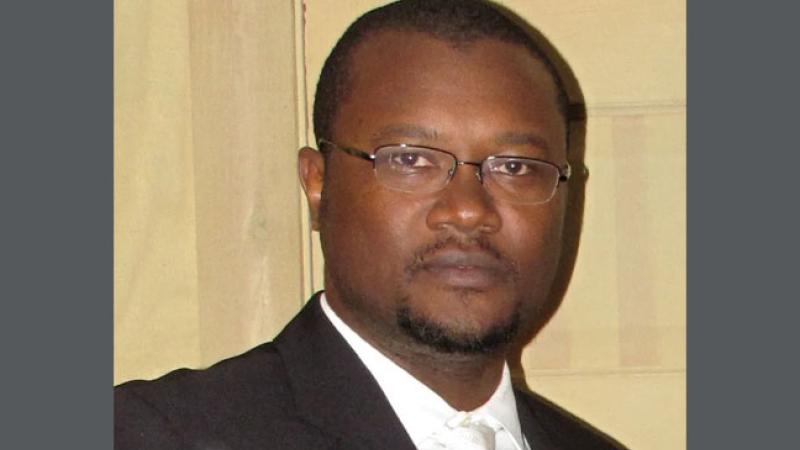New method enables effective free-space optical communication regardless of weather
March 1, 2023

Rensselaer Polytechnic Institute’s Moussa N’Gom, assistant professor of physics, applied physics, and astronomy, has devised a method to make communications between satellites and the ground more effective no matter the weather. In research recently published, N’Gom and his team used ultrafast, femtosecond lasers to cut through the clouds and rain that commonly cause losses in free-space optical communication (FSO).
“The lasers we use are so energetic that they change the environment in which they propagate,” N’Gom said. “The environment starts to change the laser that is changing it, and they have a light-matter interaction. It becomes a cascading effect that creates a long filament of light.”
The filament of light is accompanied by a shockwave, along the lines of a sonic boom. The laser filament propagates through clouds and the accompanying shockwave clears the space around the filament, providing an open pathway for visible light. N’Gom uses structured light, in the form of a spiral with a hole at its center, to propagate through the pathway.
“The Laguerre–Gauss beam travels through this empty space without interacting with the filament and is unobstructed by the clouds,” N’Gom said. “Normally, light travels in one, flat wave, but the light we create travels in a spiral. Imagine it like curling a flat piece of paper with scissors.”
On top of facilitating transmission through clouds, the spiral shape of the light also allows for more information to be transmitted.
The method presents a significant advance for FSO, which already has substantially higher capacity than radio frequency communication. Previous attempts to overcome the persistent obstacle of rain and clouds required substantial energy, large investments, or were less effective.
“Dr. N’Gom’s innovative research shows how to overcome a fundamental barrier in free-space optical communication,” said Curt Breneman, dean of the Rensselaer School of Science. “I expect free-space optical communication technology of this type to enable hyper-speed secure worldwide quantum communications.”
N’Gom was joined in research by doctoral students Tianhong Wang, Saad Bin Ali Reza, Finn Buldt, and postdoctoral associate Pascal Bassène. The work was funded by the National Geospatial Agency.